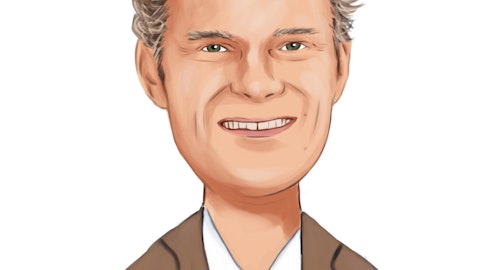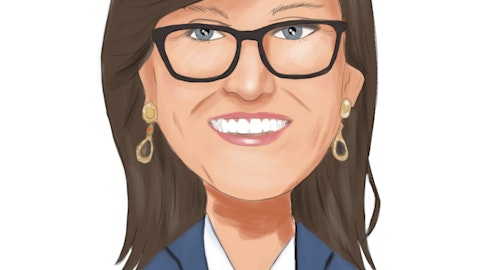Chip Paucek: Yes, yes, it’s been a very active process. So, we’re feeling good about how we’ve done and feel like it’s the right call for cash, the right call for the balance sheet, the right call for long term of the business. The market has changed substantially over the 16 years that we’ve done this, and we’re pretty thrilled, honestly, with the results from the standpoint of new pipeline. The health of the existing portfolio is very strong. You’d have some programs that are higher priced, but occupy a certain part of the market or are really incredible brands. But affordability is certainly key. And that’s why we’re trying to give you a little bit of color on the same store sales idea because the first time, since before COVID, that we’re seeing year-on-year growth.
So we do think it’s that whole mid-single-digits notion is starting to appear. And we do think there is some countercyclicality to answer, to add to Ryan MacDonald’s question. But you’ll also note that affordability is pretty key today. And so, this rotation, while in the late innings, we think is really positive long term. I guess I would also take an opportunity to talk about the Degree business just to highlight the sheer volume of new programs that we’re bringing in. We’ve certainly never seen anything like that. So you’re talking about 80 plus in 2024. You’re talking about $120 million of revenue at the steady state. And what’s great is many of these programs exist already. So we can get them launched and bring in revenue with very little J curve.
So, it’s a different business than it is compared to the one that we started years ago.
Paul Lalljie: And probably we should add a little bit of the outlook because we’ve seen the submits, we’ve seen the leading indicators that basically indicate for us, George, that the portfolio, if one were to perform a forward portfolio management, the degree portfolio is expected to grow mid-single-digits next year. And that is all because of the types of programs we have, the average tuition in those programs, and our ability to market those programs because they fit and align well with our strategy.
Operator: Your next question is from the line of Ryan MacDonald.
Ryan MacDonald: Just maybe on the second question. As we think about the plan for degree program launches, the 80 next year and potentially 80 in 2025 again, how much of that was already contemplated from an investment perspective in your budget versus how much of the cash generated from the portfolio management is going to be utilized towards launching those programs versus sort of strengthening the balance sheet, if you will?
Paul Lalljie: Ryan, a couple of things. I think we had given 50 earlier on in the year. So, we did expect a very large number. I think the key driver here is our flex degree model. It allows us to launch programs cheaper and faster. I would say also that because a lot of what we’re launching next year, we have a large percentage that’s takeovers, and it comes from one particular school, it allows us to do this much cheaper than the average that we had mentioned. We had mentioned a flex degree has a cash flow point of between $500,000 to $1 million and is now much lower because you have one school and it’s a takeover. It means that it has the infrastructure for that initial demand. You don’t have to build that initial demand from scratch.
Operator: The next question is from the line of Josh Baer.
Josh Baer: I just wanted to make sure I had straight like the amount of revenue this year from the portfolio management activity. So, $80 million in Q4, $26 million was in Q3. Was there any in the first half? And then just wanted to make sure, like, the $49 million from cash flow that could come from more portfolio management activities? Is that the right way to think about the potential future best guess revenue as well?





